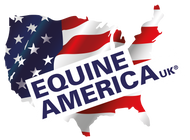Sugar in Supplements

One of the most common questions we get on our technical helpline relates to sugar levels in our supplements. There is a common misconception that sugar is always bad. Actually, sugar is a necessary energy source for all cells (including brain cells!) but we all agree too much can be bad. This is particularly true when sugar (and starch) is fed to ponies with Equine Metabolic Syndrome (EMS) and insulin dysregulation, as it produces an abnormally high insulin spike which increases the risk of laminitis.
When calculating sugar intake, it is important to put things into perspective, especially when considering if a supplement should be added or continued in a diet. The diet should be considered as a whole, and the risk compared to the benefit when making a decision.
For example, a horse has been recently diagnosed with EMS, but is on Buteless Super Strength Powder that is providing good support for joint comfort and mobility - but should they continue with this supplement in the light of the recent EMS diagnosis? In this example the joint supplement is 2.1% sugar (from background levels of the active plant-based ingredients and linseed base material, Buteless does not have any added sugars or flavourings). This level of sugar is considered low. This equates to approximately 1.05g per 50g serve of the supplement. To put this figure into context, soaked hay will still contain approximately 3% residual water-soluble carbohydrates (WSC or ‘sugar’), so for every kilogram of soaked hay (DM basis) eaten, you can expect approximately 30g of sugar intake. If this horse eats 5kg (weight pre-soaking) of soaked hay, this will provide approximately 150g of ‘sugar’ compared with the 1.05g of sugar in the joint supplement. Therefore, the level of sugar in the supplement, due to the small serve size is tiny, so as the horse has been benefiting from the joint supplement, providing this is calculated into the total diet ration, it should be appropriate for them to continue with their joint support.
Our products are all carefully formulated to take both specific sugar levels from the supplement and total dietary levels into consideration. For example you might think Pro-Pell Plus Solution would be naturally high in sugar as it is designed to support energy levels. Actually, at 7.7% total sugars, it works out as 2.3g of total sugars per 30ml serve, which when compared to other feed stuffs, is a very small proportion of the daily intake in a typical diet. Again, it is important to ensure that this is calculated into the total diet, especially in horses and ponies that are at risk.
These calculations can be tricky and it is not always easy to find the answer on labels, as sugar is not a required declaration by law on most labels, but we pride ourselves on our transparency with ingredients and so we will always share this information with our customers when requested.
It is always recommended to consult a Vet and qualified nutritionist when formulating a diet plan for horses and ponies with clinical conditions such as EMS. Our technical team of experienced and qualified equine nutritionists and Veterinary Surgeons are happy to help: info@equine-america.co.uk or 01403 255809.
 Skip to content
Skip to content

